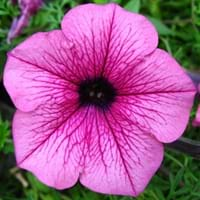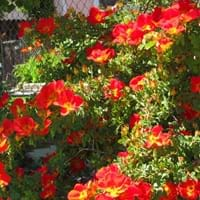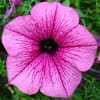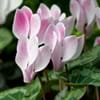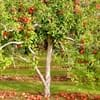Life Span
Annual
Perennial
Type
Flowering Plants, Shrubs
Flowering Plants, Ornamental Plants, Shrubs
Origin
South America
Not Available
Types
Grandiflora Petunias, Multiflora Petunias, Wave Petunias, Superbell Petunias, Supertunia Petunias
Not Available
Number of Varieties
Not Available
Habitat
Terrestrial
Foot Hills
USDA Hardiness Zone
9-10
Not Available
AHS Heat Zone
Not Available
Not Available
Sunset Zone
not provided
Not Available
Habit
Not Available
Clump-Forming
Flower Color
Blue, Pink, Purple, Red, White, Yellow
Orange Red, Yellow
Flower Color Modifier
Not Available
Bicolor
Fruit Color
Not Available
Non Fruiting Plant
Leaf Color in Spring
Golden Green
Green
Leaf Color in Summer
Green
Green, Dark Green
Leaf Color in Fall
Green
Dark Green
Leaf Color in Winter
Green
Dark Green
Plant Season
Summer
Spring, Summer, Fall
Sunlight
Full Sun, Partial shade
Full Sun, Partial Sun
Type of Soil
Loamy, Sandy
Loam, Sand
The pH of Soil
Neutral
Acidic, Neutral
Soil Drainage
Well drained
Well drained
Bloom Time
Fall, Spring, Summer
Spring, Late Spring, Early Summer, Summer, Late Summer, Early Fall, Fall
Repeat Bloomer
Yes
Not Available
Tolerances
Pollution
Drought
Where to Plant?
Container, Ground, Pot
Container, Ground, Pot
How to Plant?
Seedlings, Transplanting
Cuttings
Plant Maintenance
Medium
Medium
Watering Requirements
Keep the ground moist but not water-logged, Requires regular watering, Requires watering in the growing season
Average Water Needs
In Summer
Lots of watering
Lots of watering
In Spring
Moderate
Moderate
In Winter
Average Water
Average Water
Soil pH
Neutral
Acidic, Neutral
Soil Type
Loamy, Sandy
Loam, Sand
Soil Drainage Capacity
Well drained
Well drained
Sun Exposure
Full Sun, Partial shade
Full Sun, Partial Sun
Pruning
Cut or pinch the stems, Do not prune during shooting season, Remove dead or diseased plant parts, Remove deadheads
Remove damaged leaves, Remove dead branches, Remove dead leaves
Fertilizers
All-Purpose Liquid Fertilizer
All-Purpose Liquid Fertilizer
Pests and Diseases
Aphids, Bacterial Blight, Caterpillars, Gray mold, Leaf spot, Powdery mildew, Root rot, Spider mites, Thripes, Verticillium Wilt, Viruses
Beetles, Black Spot, Caterpillars, Downy mildew, Mosaic viruses, Powdery mildew, Rust, Scale insects, Thripes
Plant Tolerance
Drought
Drought
Flower Petal Number
Not Available
Double
Edible Fruit
No
Not Available
Fragrant Bark/Stem
Yes
No
Foliage Texture
Medium
Medium
Foliage Sheen
Matte
Glossy
Invasive
No
Not Available
Self-Sowing
Yes
Not Available
Attracts
Butterflies, Hummingbirds
Birds, Butterflies
Allergy
Not Available
Rash
Aesthetic Uses
Beautification, Bouquets, Showy Purposes
Showy Purposes
Beauty Benefits
Not Available
Not Available
Environmental Uses
Air purification
Air purification
Medicinal Uses
Not Available
Not Available
Part of Plant Used
Flowers
Flowers
Other Uses
Showy Purposes
Oil is used in perfume, soaps, creams, etc.
Used As Indoor Plant
Yes
Yes
Used As Outdoor Plant
Yes
Yes
Garden Design
Bedding Plant, Container, Edging
Container, Cutflower, Feature Plant, Foundation, Mixed Border, Topiary / Bonsai / Espalier
Botanical Name
Petunia
Rosa foetida
Common Name
Petunia
Austrian briar, Persian yellow rose, Austrian copper rose
In Hindi
Petunia
Austrian copper rose
In German
Petunie
Die Gelbe Rose, Fuchs-Rose, Wachs-Rose, Persische Gold-Rose, Austrian Briar
In French
Pétunia
Le rosier fétide
In Spanish
Petunia
Rosa foetida
In Greek
πετούνια
Austrian copper rose
In Portuguese
Petúnia
Rosa fétida
In Polish
Petunia
Róża żółta
In Latin
Petunia
Austrian copper rose
Phylum
Streptophyta
Magnoliophyta
Class
Magnoliopsida
Magnoliopsida
Family
Solanaceae
Rosaceae
Clade
Angiosperms, Asterids, Eudicots
Not Available
Tribe
Not Available
Not Available
Subfamily
Petunioideae
Not Available
Number of Species
Not Available
Properties of Petunia and Austrian Copper Rose
Wondering what are the properties of Petunia and Austrian Copper Rose? We provide you with everything About Petunia and Austrian Copper Rose. Petunia doesn't have thorns and Austrian Copper Rose doesn't have thorns. Also Petunia does not have fragrant flowers. Petunia has allergic reactions like Not Available and Austrian Copper Rose has allergic reactions like Not Available. Compare all the properties and characteristics of these two plants. Find out which of these plant can be used as indoor plant. If you are interested to decorate your house and garden, find out aesthetic uses, compare them and select the plant which will beautify your surrounding. Along with beautification, try comparing medicinal and edible uses of Petunia and Austrian Copper Rose and you can choose the plant having best and most benefits.
Season and Care of Petunia and Austrian Copper Rose
Season and care of Petunia and Austrian Copper Rose is important to know. While considering everything about Petunia and Austrian Copper Rose Care, growing season is an essential factor. Petunia season is Summer and Austrian Copper Rose season is Summer. The type of soil for Petunia is Loamy, Sandy and for Austrian Copper Rose is Loam, Sand while the PH of soil for Petunia is Neutral and for Austrian Copper Rose is Acidic, Neutral.
Petunia and Austrian Copper Rose Physical Information
Petunia and Austrian Copper Rose physical information is very important for comparison. Petunia height is 5.00 cm and width 2.50 cm whereas Austrian Copper Rose height is 150.00 cm and width 170.00 cm. The color specification of Petunia and Austrian Copper Rose are as follows:
Petunia flower color: Blue, Pink, Purple, Red, White and Yellow
Petunia leaf color: Golden Green
Austrian Copper Rose flower color: Orange Red and Yellow
- Austrian Copper Rose leaf color: Green
Care of Petunia and Austrian Copper Rose
Care of Petunia and Austrian Copper Rose include pruning, fertilizers, watering etc. Petunia pruning is done Cut or pinch the stems, Do not prune during shooting season, Remove dead or diseased plant parts and Remove deadheads and Austrian Copper Rose pruning is done Remove damaged leaves, Remove dead branches and Remove dead leaves. In summer Petunia needs Lots of watering and in winter, it needs Average Water. Whereas, in summer Austrian Copper Rose needs Lots of watering and in winter, it needs Average Water.
